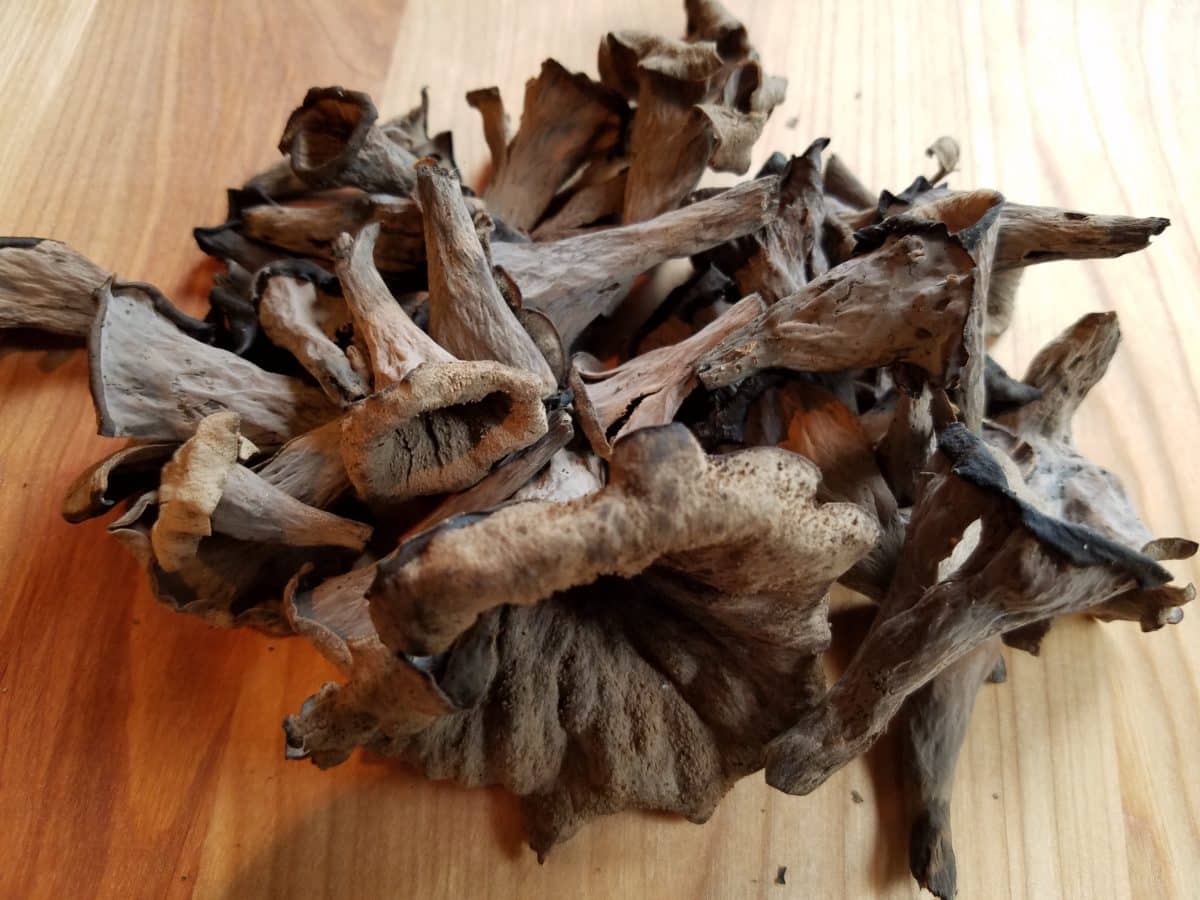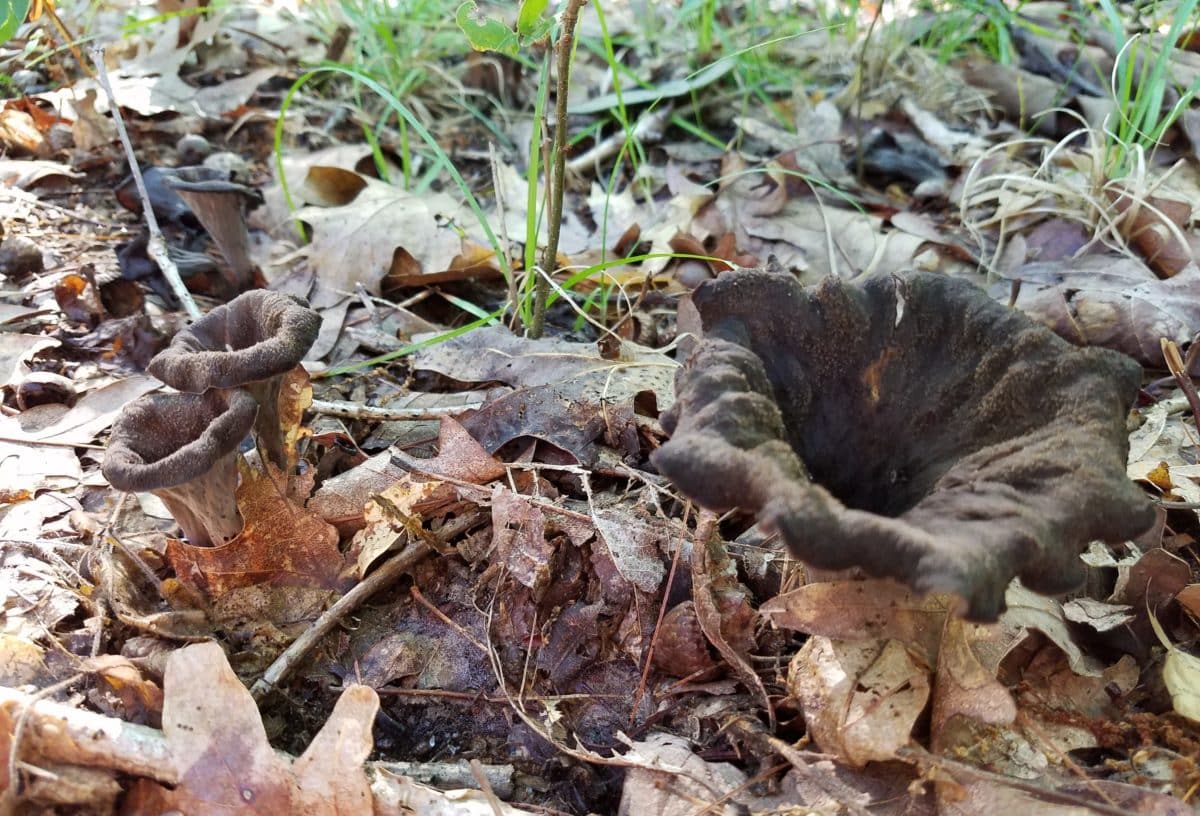Called “Poor Man’s Truffle” in Eastern Europe, Black Trumpet mushrooms, also known as Horn of Plenty, can be found in many parts of the world. However, many experienced foragers can go years, even a lifetime, without finding these elusive truffle-like treats. Craterellus cornucopiod is a variety native to the forests of Europe, and Craterellus fallax (in English, translated as “deceptive little crater”) fruits in oak-dominated forests throughout North America. Difficult to locate but easy to identify, one can understand how this vaselike mushroom got its name. Gray, blackish or tan in coloring, and only 2.5- 8 cm (1 – 5 inches) tall and up to 8 cm (3 inches) wide, it’s easy to pass right by these funnel-shaped morsels, which seem to hide purposefully in leaf litter, muddy paths, or river banks.

Black Trumpets have no poisonous look-alikes, no true gills except for some slight ridges, and no pore surface. They are hollow inside and in their strange darkness and beauty appear like Gothic flowers blooming from the ground.
Sadly, these mushrooms are not easy to cultivate because they are mycorrhizal, which means they live as part of a network with hardwood trees. So here are some tips to help you forage some in the wild. Target oak or beech forests during summer and autumn with lots of tree cover above and mossy and/or leafy carpet below. Trumpets come up, singly or in clusters, out of moist soil. They tend to shrivel up in dry weather, so it’s best to look during the few days after a steady rain. Move slowly, look carefully, and stay near rivers or bodies of water. I often find them in areas where their cousin, the bright orange or yellow Chanterelle grows. Chanterelles are much easier to spot, and a bonus to collect along with the trumpets.
If you should happen upon some Horn of Plenty you’ll be happy to know they will keep appearing in the same spot, year after year. I return to the same oak forest every year, to a mossy area around a rotted tree stump. Sometimes there are trumpets, sometimes only chants, but I’m seldom disappointed with either. When found, cut Black Trumpets at the base of their funnel instead of pulling them up out of the soil — this will keep dirt at a minimum and make cleaning easier. Black Trumpets dehydrate and rehydrate very well. You can even sun-dry them if you don’t have a dehydrator.
Collect and store Black Trumpets in a paper bag in the fridge if you want to use them fresh, but try to use within a few days. Just before cooking, slice them in half lengthwise and remove dirt and debris with a brush or cloth. Fresh trumpets have an aroma that’s lightly sweet/fruity and earthy. Cooked trumpets have an intensely delectable, bright nutty taste that is as deep as it is complex: fruit of the earth, slightly sweet and woodsy. Avoid combining them with other mushrooms when cooking so not to overwhelm their flavor, but they can become bitter if not cooked in direct contact with a fat like butter, especially if they had been dried. Rehydrate as you would any other dried mushroom by covering with warm water, broth, or wine, then remove the trumpets with a slotted spoon. You can use the liquid in cooking, but first strain it through several layers of cheesecloth to remove any grit. Not much cooking time is needed because these mushrooms are so thin.

Black Trumpets are excellent in egg and/or cream-based dishes, but also lend amazing flavor to soups and sauces (especially cream sauces), pasta and rice. Keep in mind that rehydrated Black Trumpets may lend a grayish color or black flecking to a dish, but it’s a small cosmetic price to pay for truffle-like goodness. Trumpets are also a good side dish for game meats and lovely as filling for tarts or forest pies. ![]()
